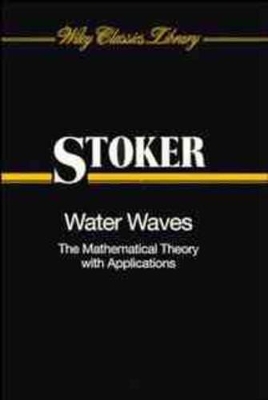Wiley Classics Library
1 primary work • 3 total works
Book 36
Offers an integrated account of the mathematical hypothesis of wave motion in liquids with a free surface, subjected to gravitational and other forces. Uses both potential and linear wave equation theories, together with applications such as the Laplace and Fourier transform methods, conformal mapping and complex variable techniques in general or integral equations, methods employing a Green's function. Coverage includes fundamental hydrodynamics, waves on sloping beaches, problems involving waves in shallow water, the motion of ships and much more.
This introduction to differential geometry is now available in paperback. Stoker makes this fertile branch of mathematics accessible to the nonspecialist by the use of three different notations: vector algebra and calculus, tensor calculus and the notation devised by Cartan, which employs invariant differential forms as elements in an algebra due to Grassman, combined with an operation called exterior differentiation. Readers are assumed to have a passing acquaintance with linear algebra and the basic elements of analysis.
Presents underlying principles and theories using an easily understood approach. Focuses specifically on those features of the problems in which nonlinearity results in a variety of distinctive new phenomena that can be treated by techniques both interesting and instructive in themselves and which do not require the use of sophisticated mathematics. Recent work discussed includes the endeavors of Levinson and Smith on the existence and uniqueness of the periodic solution in a general case of the self-excited type, Haag and Dorodnitsyn on asymptotic developments and quantities associated with relaxation oscillations. Along with 5 appendices containing rigorous existence and uniqueness proofs, readers are both implicitly and explicitly supplied with hints regarding new problems to be tackled plus numerous ideas and techniques that can be used to solve them.

